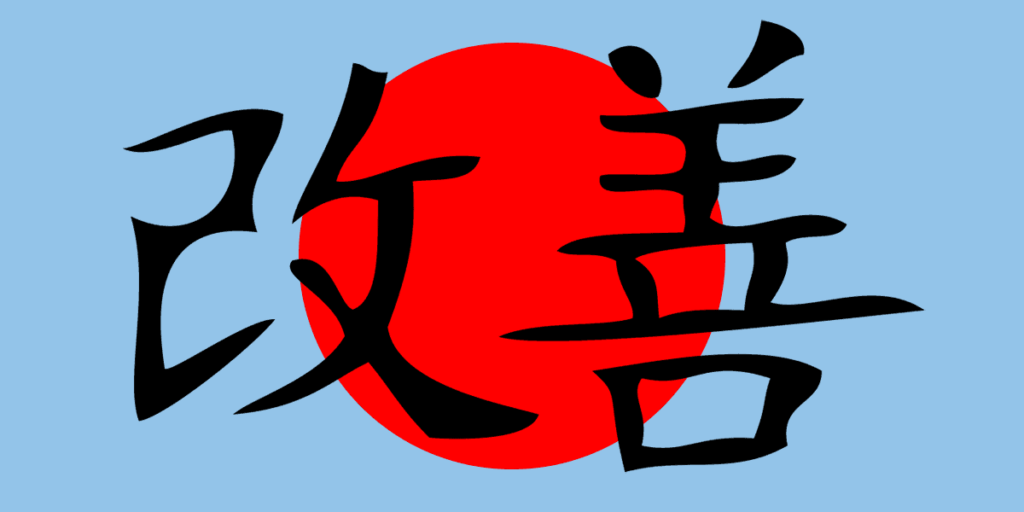Never heard of Kaizen? Well, you’re not alone. It’s a Lean Six Sigma term and a Japanese philosophy that focuses on continual improvement. Not just for IT service management (ITSM), but all aspects of life. It’s the Japanese word for “change for better” or “continual improvement.” It can be used to improve every part of an organization, from the IT service desk to marketing operations – aiming to eliminate “waste” through the improvement of standardized activities and processes. It’s ultimately about bringing people who have a similar interest – usually in having a particular problem solved – together to improve things.
If you wish to know more about Kaizen, and how it helps, then this article is for you.
Want to know more about Kaizen and how it can help your service desk? Check out this article from @Joe_the_IT_Guy #servicedesk #Kaizen Share on XKaizen is about giving stakeholders a voice
There are many voices to consider when carrying out any Kaizen activity within IT:
- Voice of the Customer (VoC) – this gives the IT organization feedback on how the customer experiences IT services. These are the people who use the IT services provided day-to-day.
- Voice of the Business (VoB) – this is derived from financial information and data, and identifies strengths, weaknesses, use of investment, and process complexity.
- Voice of the Process (VoP) – this takes the information captured from the VoC and VoB and prioritizes and categorizes process improvements.
- Voice of the Employee (VoE) – this provides employees a dialogue with management that highlights how they’ll apply the company vision to their daily tasks and how they’ll engage within improvements.
- Voice of the Regulator (VoR) – this is having regulatory requirements in mind such that your improvements will not only be fit-for-purpose, but they’ll also hold up in an audit situation.
Key Kaizen roles
When creating a Kaizen improvement team, there are three key roles to consider:
- Kaizen Sponsor – this is the owner of the issue and the person who has a direct interest in fixing it. They need to see the Kaizen event – “any action whose output is intended to be an improvement to an existing process” – through to its conclusion.
- Kaizen Lead – they manage the process on behalf of the sponsor, ensuring that the correct steps are followed as efficiently as possible.
- Kaizen Team Members – these people carry out the required work and must be involved with the problem as it occurs during their day job.
The Benefits of Kaizen
The generic benefits include:
- Less wastage in terms of defects, errors, or rework
- Leaner, more efficient processes
- A greater focus on workflow, with a “pull” rather than a “push” approach
- Reduced setup times
- A quicker time-to-market.
Getting Ready for Kaizen
With Kaizen, preparation is key. A Kaizen charter should be created – this describes the problem and maps out the required resources. For example, the people, time, and budget required to resolve or improve the issue.
Based on the charter, the Kaizen event can be appropriately planned out. This gives you the best possible chance of success. One approach is to block out Wednesday mornings, with this time dedicated to improvement.
Carrying Out Kaizen-Based Improvements
In an ideal world, your first improvement meeting should include operators, technicians, managers, and process owners. The current process or service should be mapped out with problem areas identified. All the relevant stakeholders can suggest and agree on the improvements.
Importantly, don’t try to change everything in one go. The focus of your activities should be on reducing a defect or error in one part of the process (or service). Removing an element of waste or improving a subprocess, not completely redesigning everything from scratch.
The focus of your Kaizen activities should be on reducing a defect or error in one part of the process (or service) – don't try to change everything in one go, says @Joe_the_IT_Guy. #servicedesk #Kaizen Share on XThe Kaizen Process
Your kaizen process should include the following steps:
- The review of the Kaizen charter and goals.
- The review of the end-to-end process (or service). This is called a “unit walk” – stepping through the process (or service) affected. The output will be a value stream map or a baseline “as is” situation.
- Confirm the problem statements and suggestions/solutions, updating your Kaizen documentation with a “should be” or future state.
- Test the proposed solutions to confirm that they work.
- Present the findings to the project sponsor.
It’s All About “Review, Improve, Repeat”
The use of Kaizen makes many small improvements on a continual basis. Importantly, if the time, support, and motivation to continue to improve isn’t given, then eventually any gains made through Kaizen activities will slip and you’ll potentially be back where you started. Also, plan your next Kaizen activities as soon as possible to keep the momentum going – with Kaizen a series of ongoing improvements.
Have you started to use Kaizen in your organization? Has it made a big difference? Please let me know in the comments!

